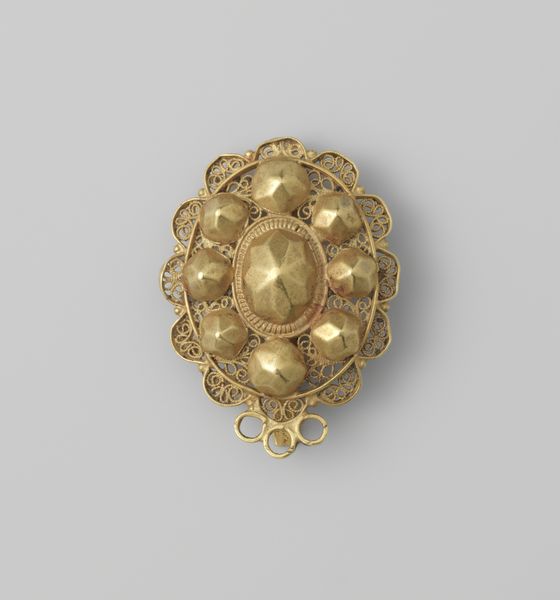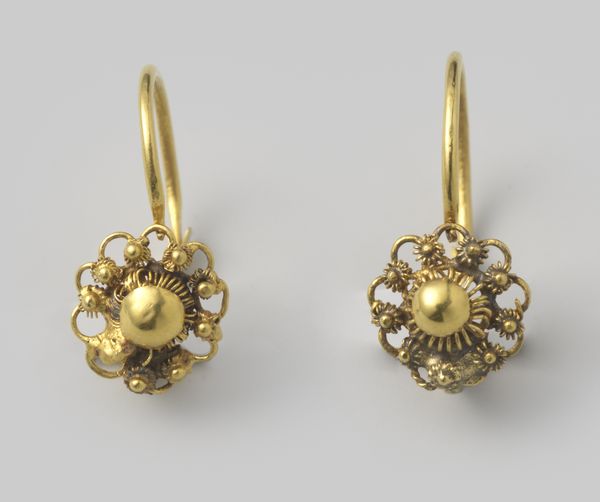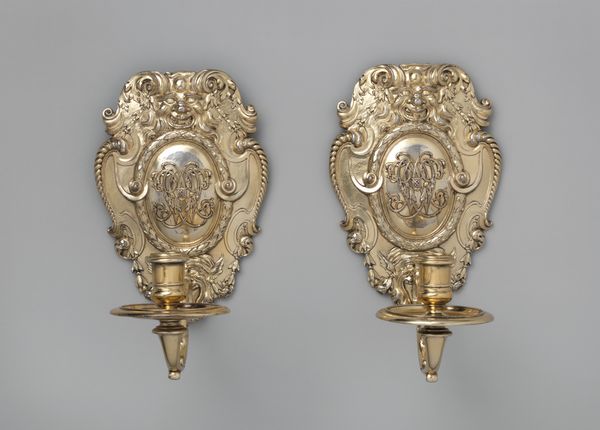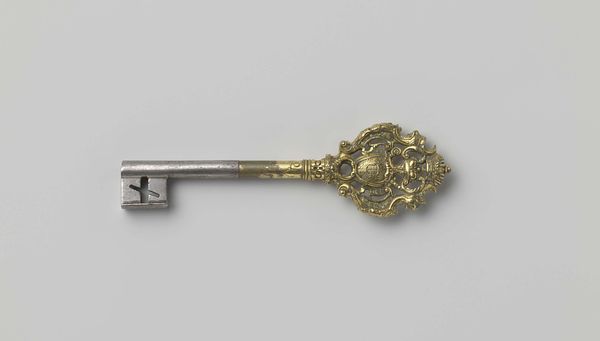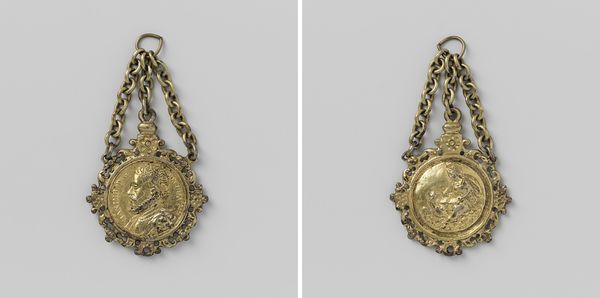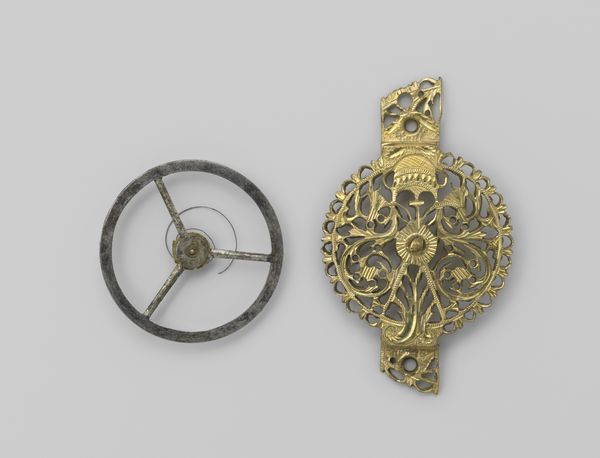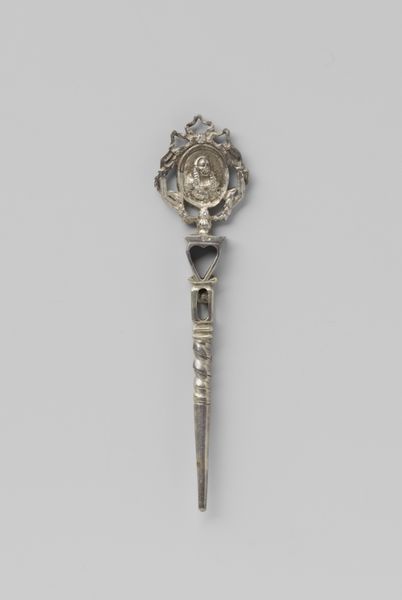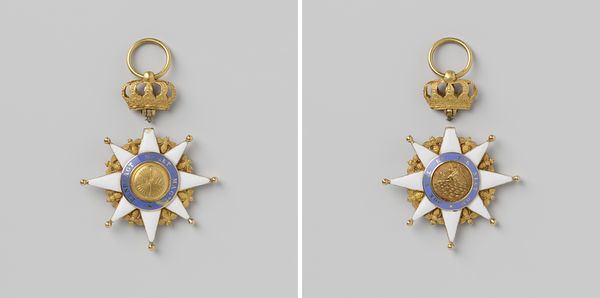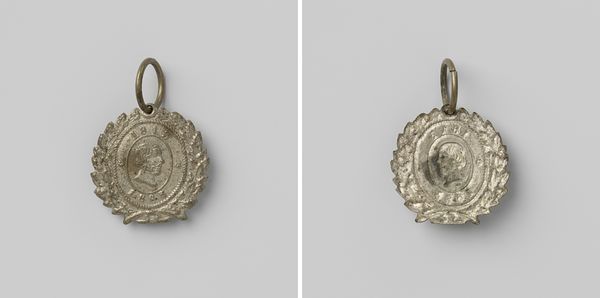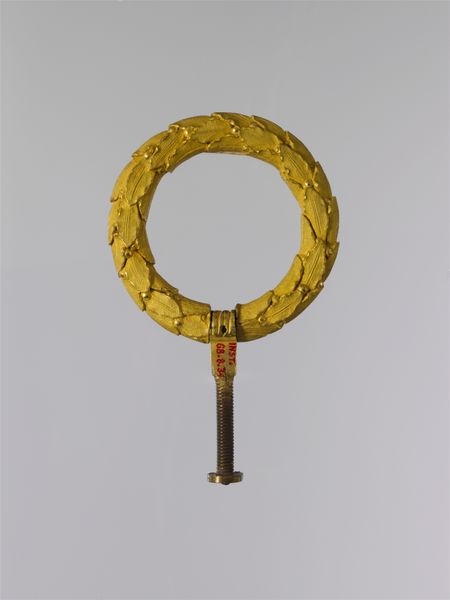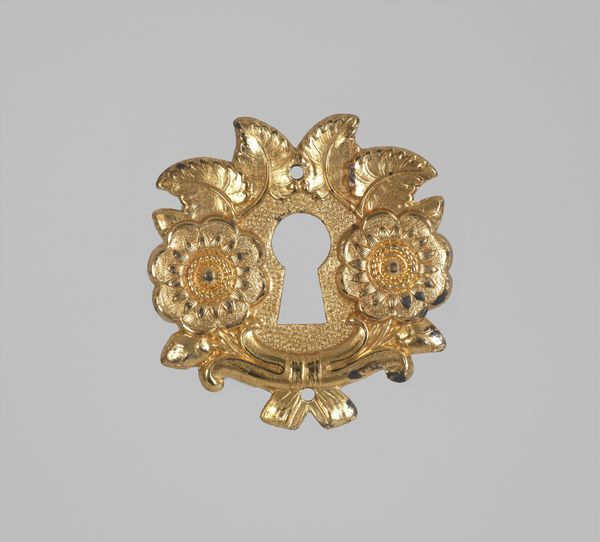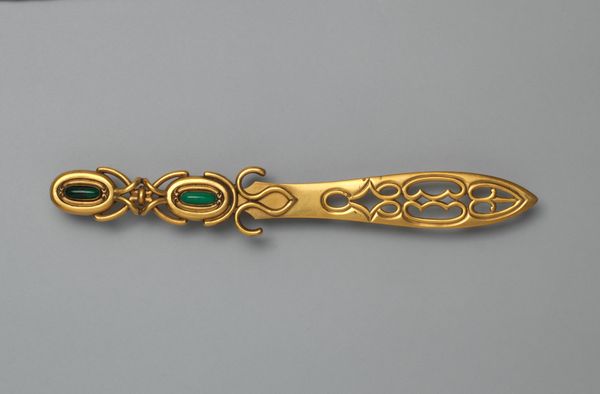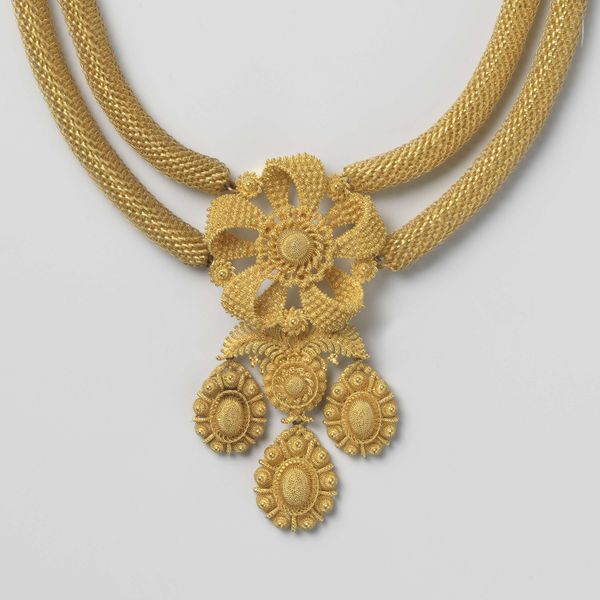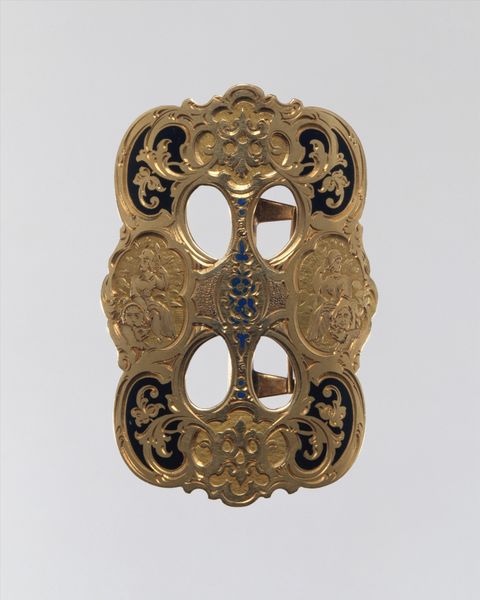
brass, carving, metal
#
portrait
#
neoclacissism
#
brass
#
carving
#
metal
#
form
#
decorative-art
Dimensions: Backplate: Diam. 2 7/8 in. (7.3 cm) Ring pull: Diam. 1 7/8 in. (4.8 cm)
Copyright: Public Domain
Here we have furniture hardware made by Henry Kellam Hancock in the 19th century. The backplate and ring pull were fashioned from brass and then gilded, giving them a luxurious golden sheen. The floral backplate and simple ring design exemplify the era’s aesthetic sensibilities, but also point to broader issues of production. In this period, the production of decorative hardware shifted from handcrafted to mass-manufactured. Brass was an ideal material, strong yet relatively inexpensive, and easily cast into intricate forms. Gilding added an element of opulence, making furniture appear more expensive than it actually was. Consider the labor involved. Though we don't know if Hancock himself was responsible for the entire production process, it is a testament to the division of labor that was becoming increasingly common during this time. The backplate was likely cast, tooled, and then carefully gilded by skilled artisans. This commodification of craftsmanship highlights the blurring lines between art, design, and industry. By understanding how such objects were made, we gain deeper insight into the social and economic context that shaped their creation.
Comments
No comments
Be the first to comment and join the conversation on the ultimate creative platform.
